Contrary to what your eyes suggest, the prevailing climate at this particular southeast Alaskan location is “cool wet, coastal temperate rainforest.”
The ice blocks above – most of them, enormously more massive than yours truly – had recently broken off the snout of the Reid Glacier, just before my beloved and I arrived, at low tide on a lovely spring day.
Glacier Bay only gained its name in 1890; for good reason, the earlier European explorers and colonists knew it as The Grand Pacific Glacier.
Until the early 18th century there was not any bay of liquid water; the entire “bay” was occupied by a single glacier.
That glacier was about 1200 metres deep, more than 30 kilometres wide.
Its length greatly exceeded its width.
Only after the Grand Pacific Glacier had retreated some 105 kilometres did Glacier Bay emerge – a place with islands, a prodigiously complex, shifting shoreline, a grand array of fauna and flora, some of the world’s higher coastal mountains…and around 50 named glaciers.
The Reid Glacier is nowhere near the largest of them.
It is around 16 kilometres long.
Its snout is more than one kilometre wide.
Observe the relative scale of the relevant “ice blocks” – the same ones that occupy a much larger portion of the image atop this post…
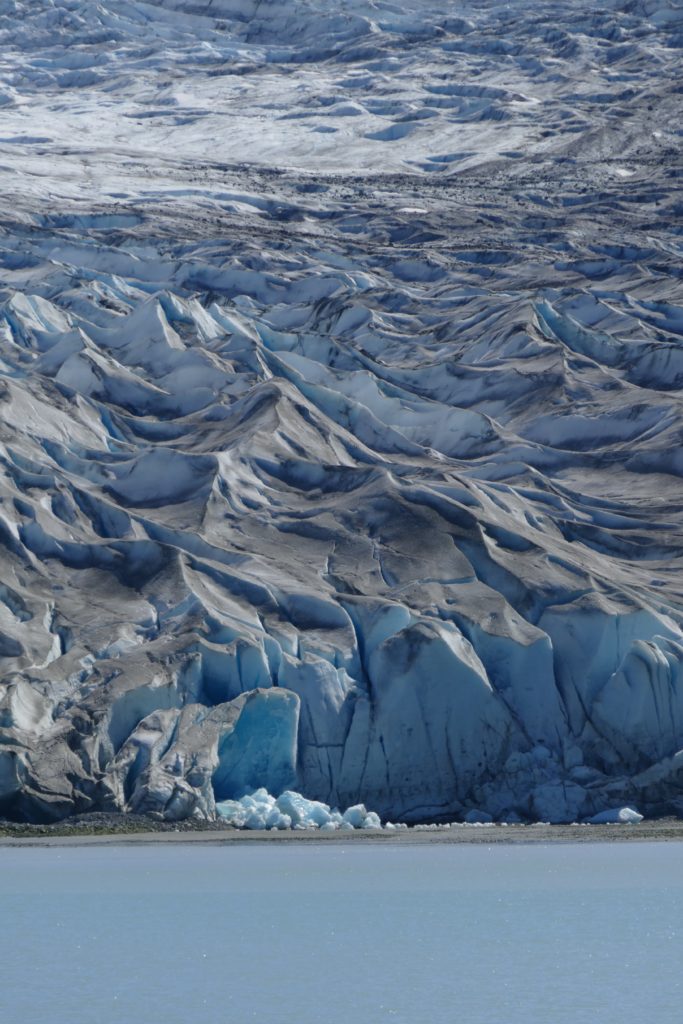
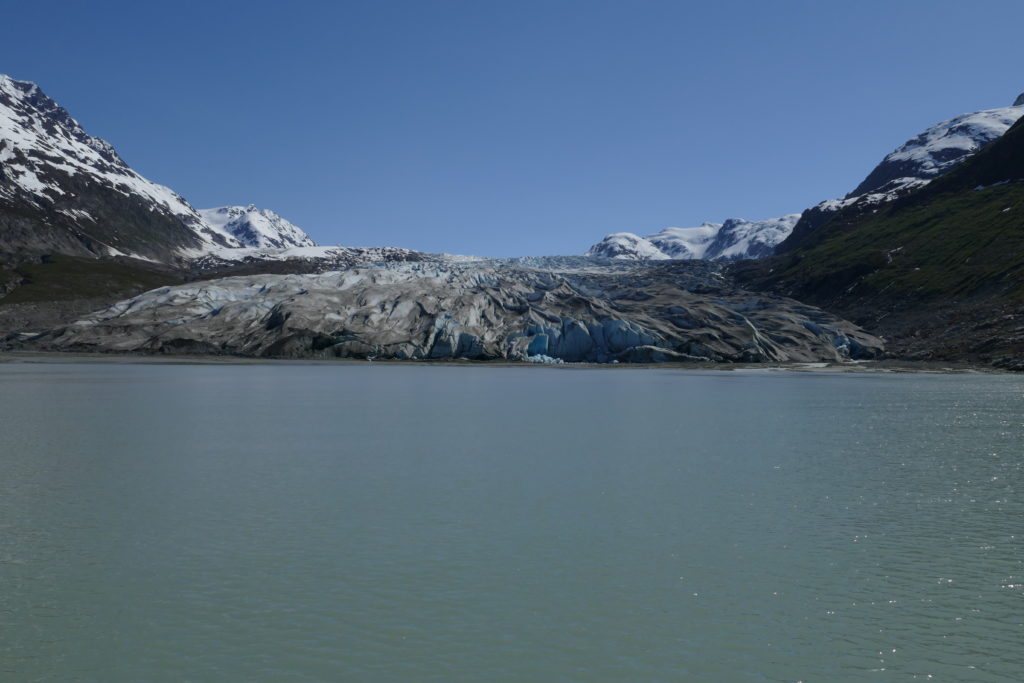
The Glacier Bay Basin is now – says Wikipedia – the largest UNESCO protected biosphere in the world.
Most people who visit do so for only a few hours, as passengers on an enormous ship.
A much luckier few stay very much longer, arrive on something very much smaller, and really experience one of the world’s more magnicent places.
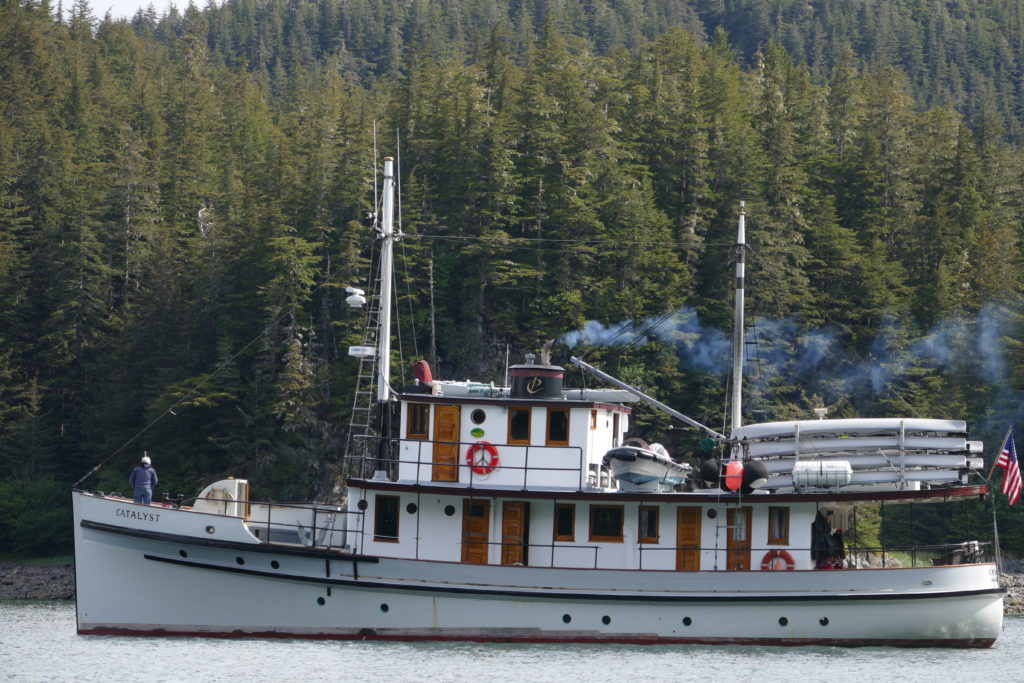
“Our” wooden boat had sea kayaks atop, a proper naturalist aboard…plus a superb cook, captain and engineer. We had a wonderful more than a week, in and around Glacier Bay.
Future Glacier Bay posts will explore other places and aspects.
This one documents our walk along the low-tide shoreline in front of Reid Glacier’s snout, and into nearby vegetated land that was – not so long ago – “permanently” covered by glacial ice.
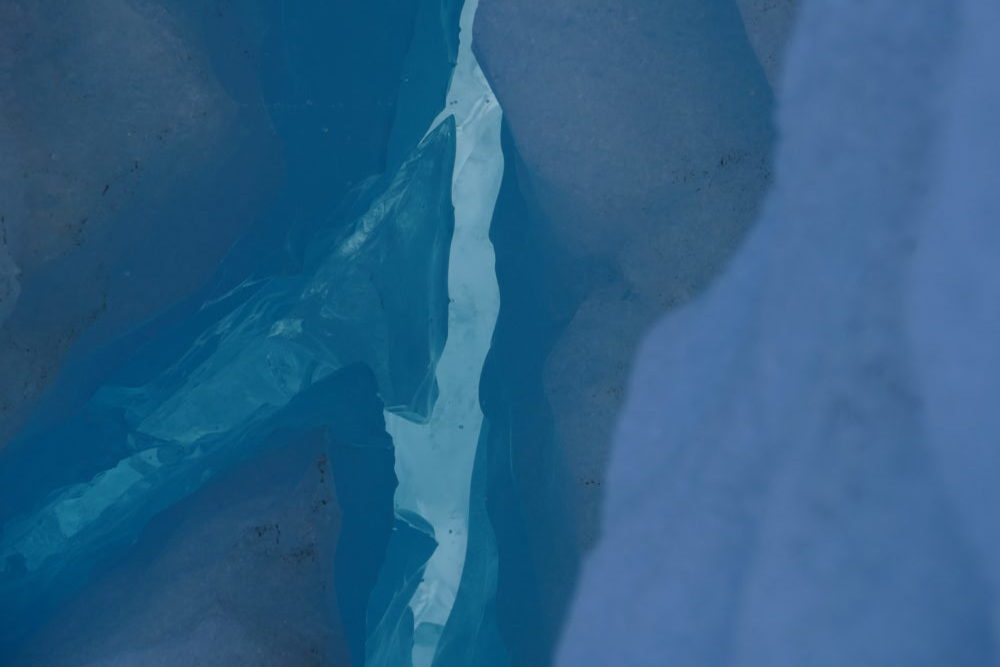
Notwithstanding its generally “dirty” topping, on a sunny day Reid Glacier’s ice offers some exquisite shades of blue.
It is also home to Annelids – segmented worms.
Earthworms are Annelids who mostly live in earth, ice worms live their entire lives in the ice – as far as we know, only in the ice of North American glaciers.
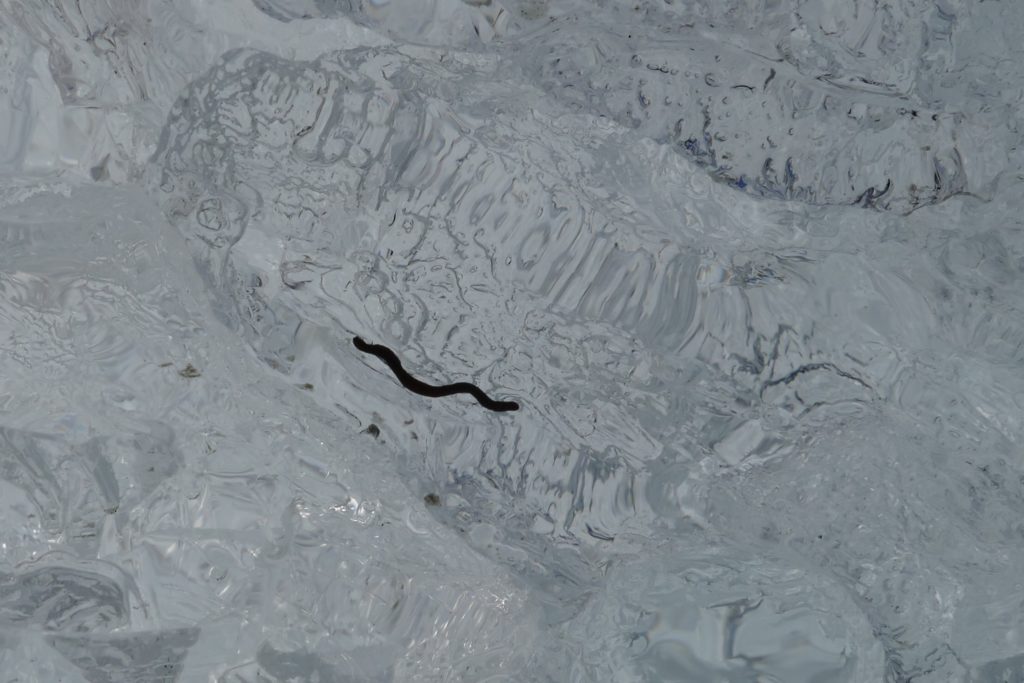
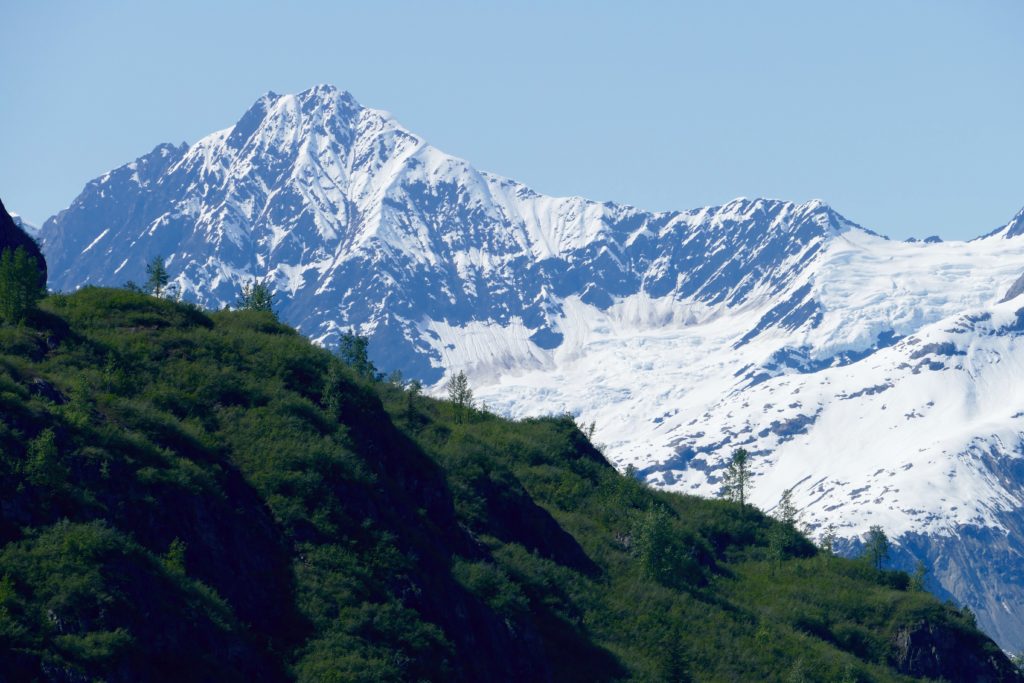
If you wish to observe/discover what happens when “permanent” ice retreats, Glacier Bay is a prime location.
As one nice little article puts it, “Where Ice Disappears, Earth Rises”.
Plants and animals also “colonise” the uncovered/ rebounding ground…although this circumstance is “curtains” for ice worms.
As S. E. Gould noted in Scientific American, “When ice worms are exposed to temperatures as modest as 5 °C (41 °F), their membrane structures disassociate and fall apart (i.e., “melt”) causing the worm itself to “liquefy.”
On our walk on the rebounding ground near Reid Glacier we saw a number of birds (even eggs, “nesting” on the ground), a frog, and many plants.
I hope that someone more knowledgable than me can either confirm or correct my attempt to identify the beautiful plants that conclude this post; I am not so certain that they are in fact Castelleja Miniata – common red paintbrush.
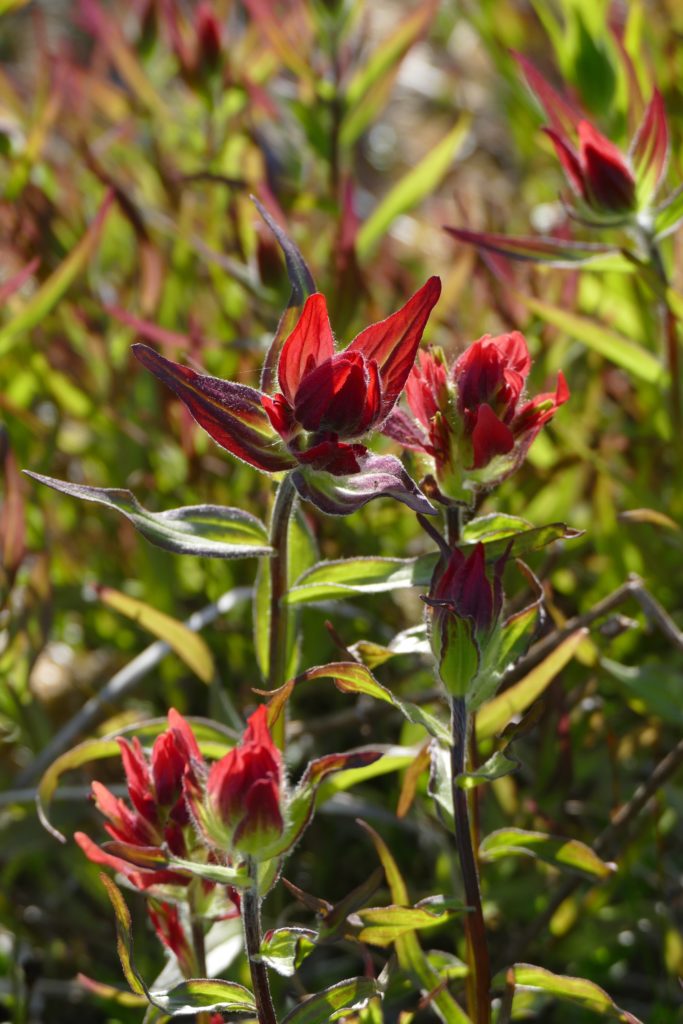
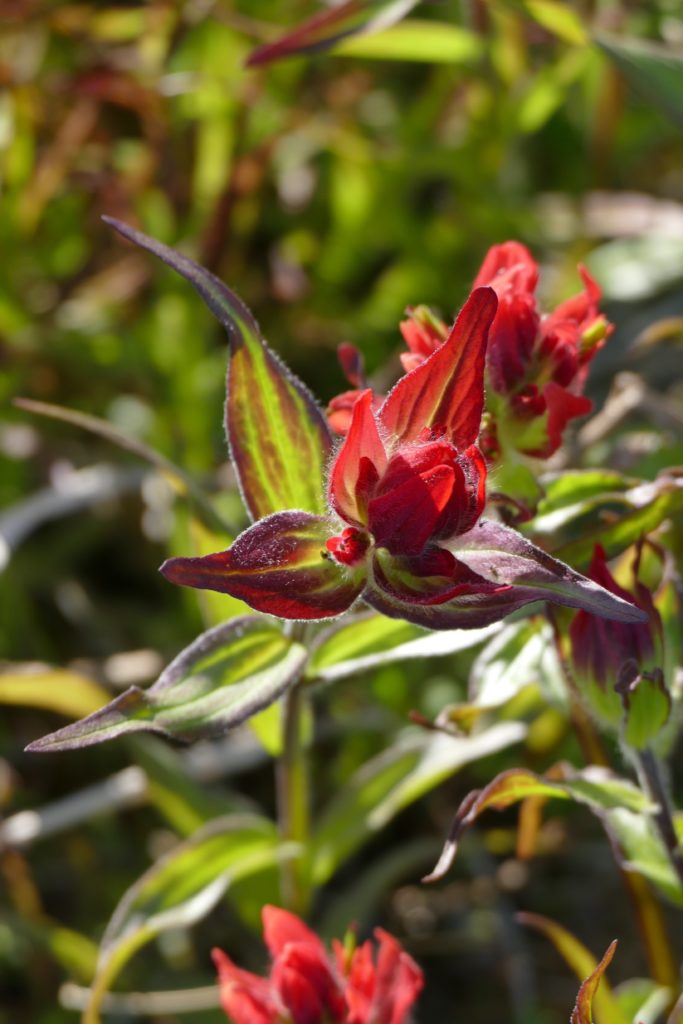
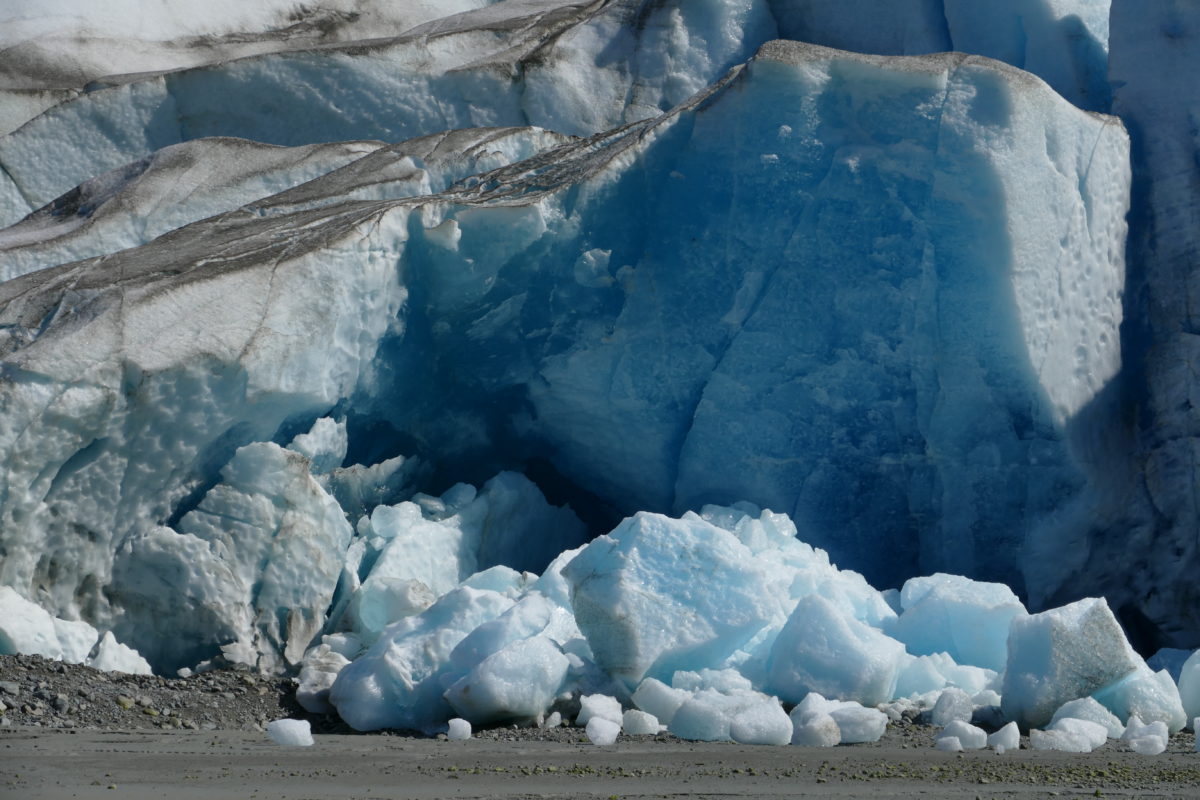
Can’t wait for more posts about Alaska 🙂